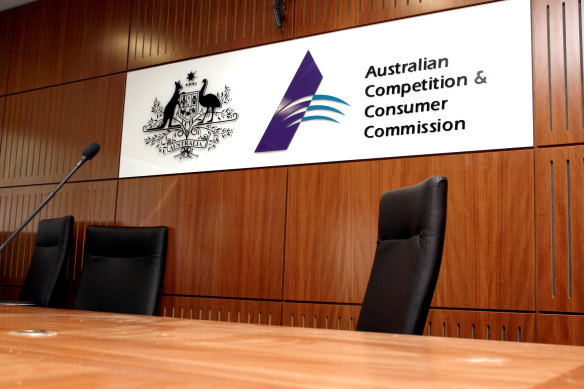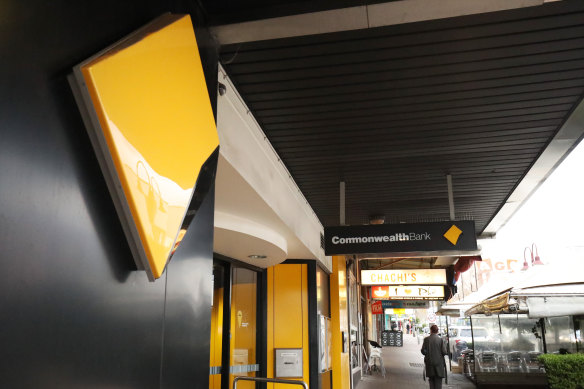Save articles for later
Add articles to your saved list and come back to them any time.
In online banking, it may seem like entering the correct BSB, account number and account name all play an important part in ensuring money is going to the right place.
But in reality, account names are not necessary for Australian banking transfers – a weakness thieves have exploited to steal millions of dollars through a ploy called invoice scamming.
Scam victim Simon Elvins, who lives in the Blue Mountains.
For Simon Elvins, victim of one of these scams, the impact has been devastating. This year, he received an email from what he thought was his conveyancer about the purchase of his first house.
The email had all the correct details about the new property in the Blue Mountains in NSW. Towards the bottom, it included a request for $274,311.57 to complete the upcoming settlement.
The details of the trust account for the payment were included, with an account name that matched the conveyancing company he had hired.
“It all looked fine. So I paid it in two amounts, because the amount was too large to do in one go,” he said.
A few days later, Simon received another email from his conveyancer telling him that they hadn’t received payment ahead of settlement.
“And I thought, ‘This account doesn’t look the same as the last one. Maybe they’ve got two accounts’,” he said. “The realisation that we had been scammed became quite clear.”
Elvins rang his bank, Westpac, immediately. They contacted NAB, where the scammers’ account was held, however it had been a week since the second transfer.
Almost all of the money was gone. So far, the banks have clawed back less than a few hundred dollars. Elvins believes scammers hacked the conveyancer’s emails to concoct the fraudulent invoice.
Invoice scamming is on the rise, according to the ACCC.Credit: Michel O’Sullivan
“Paying a transaction like that was pretty normal to me, I’ve never had any issues before,” he said.
Invoice scamming is on the rise in Australia and can result in huge losses, with a focus on big purchases such as renovations, cars and properties.
Between January and September this year, there were 28,617 false billing scams reported to the Australian Competition and Consumer Commission’s Scamwatch, with approximately $23 million lost.
Losses were 52 per cent higher on the same period last year, the watchdog said.
The Sunday Age and Sun-Herald recently revealed a case in Victoria in which a couple purchased a brand-new Mercedes-Benz SUV that resulted in a loss of $139,000 after scammers sent a fake invoice for the car.
Consumer advocates have been calling for the banks to introduce “confirmation of payee” to help stop the problem of fake invoicing, a system that is being used in the UK.
Under the Bulk Electronic Clearing System (BECS), which handles Australian transfers, the correct account name doesn’t make a difference to whether the money arrives or not.
“The banks don’t check whether the account name matches the account number, despite the fact that they asked you for it,” said Tom Abourizk, senior policy officer at the Consumer Action Law Centre.
Commonwealth Bank has introduced its own technology, but there is no industry-wide fix.Credit: Bloomberg
Some banks have started introducing their own systems to combat the issue. Commonwealth Bank this year implemented NameCheck, which compares account details with names and highlights potential differences.
Westpac has also started using Verify, which presents customers with a scam risk rating when entering a new payee for the first time.
A Westpac spokesperson did not comment on Elvins’ case but said the bank was detecting 60 per cent of scams.
“When funds are unable to be retrieved, reimbursement is considered on a case-by-case basis with a range of factors taken into account,” they said.
Scammers are sending fake invoices to trick people into paying money using bank transfers.Credit: iStock
Chris Sheehan, NAB executive for group investigations and fraud, said the bank was seeing an increase in money mules, where a person allows their accounts to be used to move stolen funds.
“These mules may also be scam victims themselves, operating accounts unwittingly and acting on a third party’s instruction,” he said.
“The mules can sometimes receive a commission for allowing their accounts to be used by the scammers.”
In Elvins’ case, Sheehan said the bank had been notified of the suspected scam after the bulk of the money had been moved from the NAB account.
“Once we were advised of the event, NAB acted quickly to freeze the remaining funds and report the disputed transfers to the receiving banks,” he said.
Customers who want to stay ahead of scammers are advised to call a company or person asking for money to check that their bank details match.
The PayID transfer system is also recommended for its safety, as it reveals a bank account holder’s name.
Elvins was able to settle on the house and not lose his $100,000 deposit. But it meant taking out lenders mortgage insurance and upping his mortgage significantly, with an extra $2000 in monthly repayments.
“I’m angry with the legal system, with the banks and the process of buying properties,” he said.
Get the day’s breaking news, entertainment ideas and a long read to enjoy. Sign up to receive our Evening Edition newsletter.
Most Viewed in National
From our partners
Source: Read Full Article






